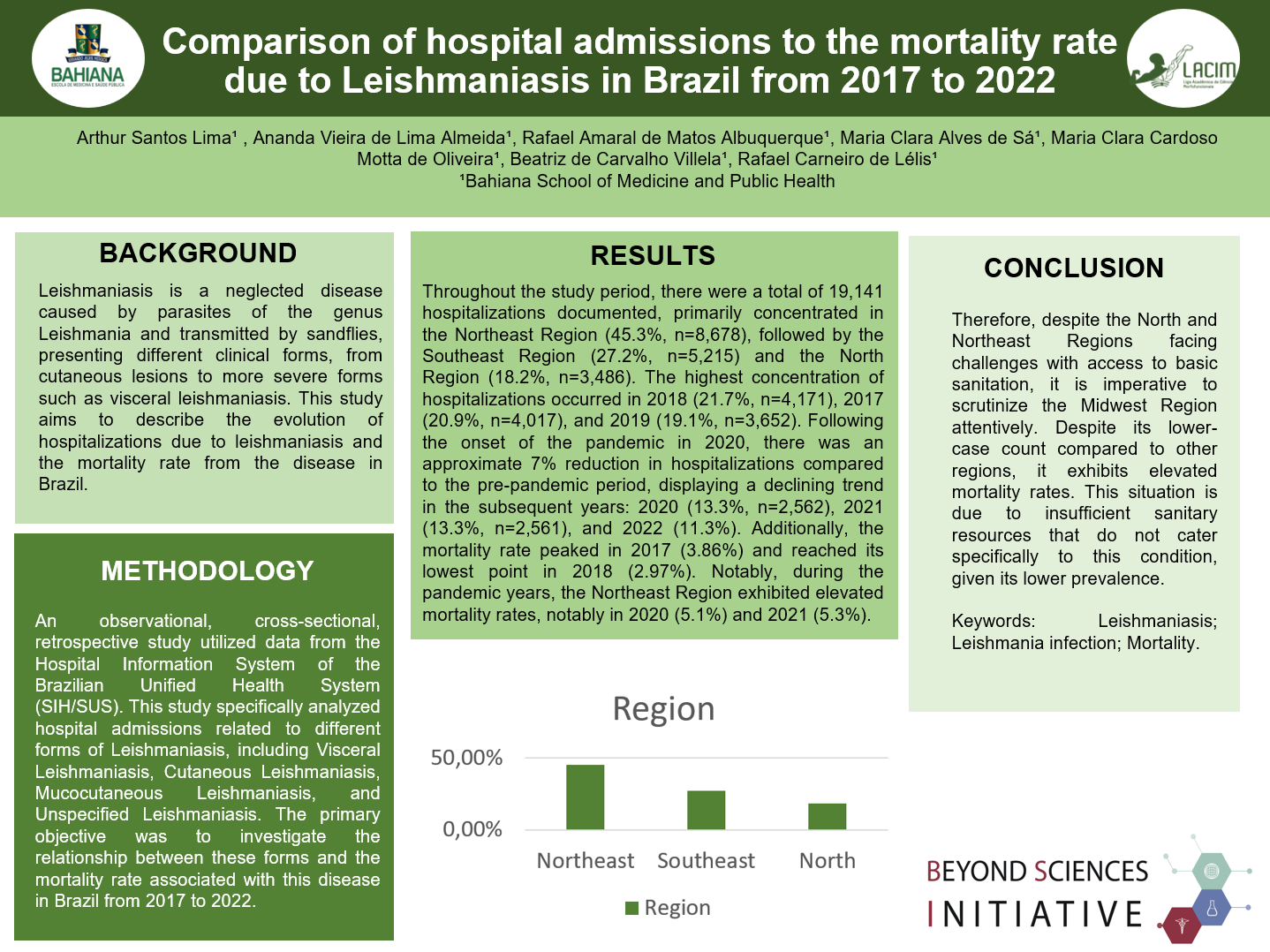Arthur Lima
Conference 2024 Poster
Poster Title
Comparison of hospital admissions to the mortality rate due to Leishmaniasis in Brazil from 2017 to 2022
Authors and Affiliations
Arthur Santos Lima1 , Ananda Vieira de Lima Almeida, Rafael Amaral de Matos Albuquerque1, Maria Clara Alves de Sá1, Maria Clara Cardoso Motta de Oliveira1, Beatriz de Carvalho Villela1, Rafael Carneiro de Lélis1
1. Bahiana School of Medicine and Public Health
Abstract
Background
Leishmaniasis is a neglected disease caused by parasites of the genus Leishmania and transmitted by sandflies, presenting different clinical forms, from cutaneous lesions to more severe forms such as visceral leishmaniasis. This study aims to describe the evolution of hospitalizations due to leishmaniasis and the mortality rate from the disease in Brazil.
Methods
An observational, cross-sectional, retrospective study utilized data from the Hospital Information System of the Brazilian Unified Health System (SIH/SUS). This study specifically analyzed hospital admissions related to different forms of Leishmaniasis, including Visceral Leishmaniasis, Cutaneous Leishmaniasis, Mucocutaneous Leishmaniasis, and Unspecified Leishmaniasis. The primary objective was to investigate the relationship between these forms and the mortality rate associated with this disease in Brazil from 2017 to 2022.
Results
Throughout the study period, there were a total of 19,141 hospitalizations documented, primarily concentrated in the Northeast Region (45.3%, n=8,678), followed by the Southeast Region (27.2%, n=5,215) and the North Region (18.2%, n=3,486). The highest concentration of hospitalizations occurred in 2018 (21.7%, n=4,171), 2017 (20.9%, n=4,017), and 2019 (19.1%, n=3,652). Following the onset of the pandemic in 2020, there was an approximate 7% reduction in hospitalizations compared to the pre-pandemic period, displaying a declining trend in the subsequent years: 2020 (13.3%, n=2,562), 2021 (13.3%, n=2,561), and 2022 (11.3%). Additionally, the mortality rate peaked in 2017 (3.86%) and reached its lowest point in 2018 (2.97%). Notably, during the pandemic years, the Northeast Region exhibited elevated mortality rates, notably in 2020 (5.1%) and 2021 (5.3%).
Conclusions
Therefore, despite the North and Northeast Regions facing challenges with access to basic sanitation, it is imperative to scrutinize the Midwest Region attentively. Despite its lower-case count compared to other regions, it exhibits elevated mortality rates. This situation is due to insufficient sanitary resources that do not cater specifically to this condition, given its lower prevalence.


An interesting review of hospitalizations and mortalities